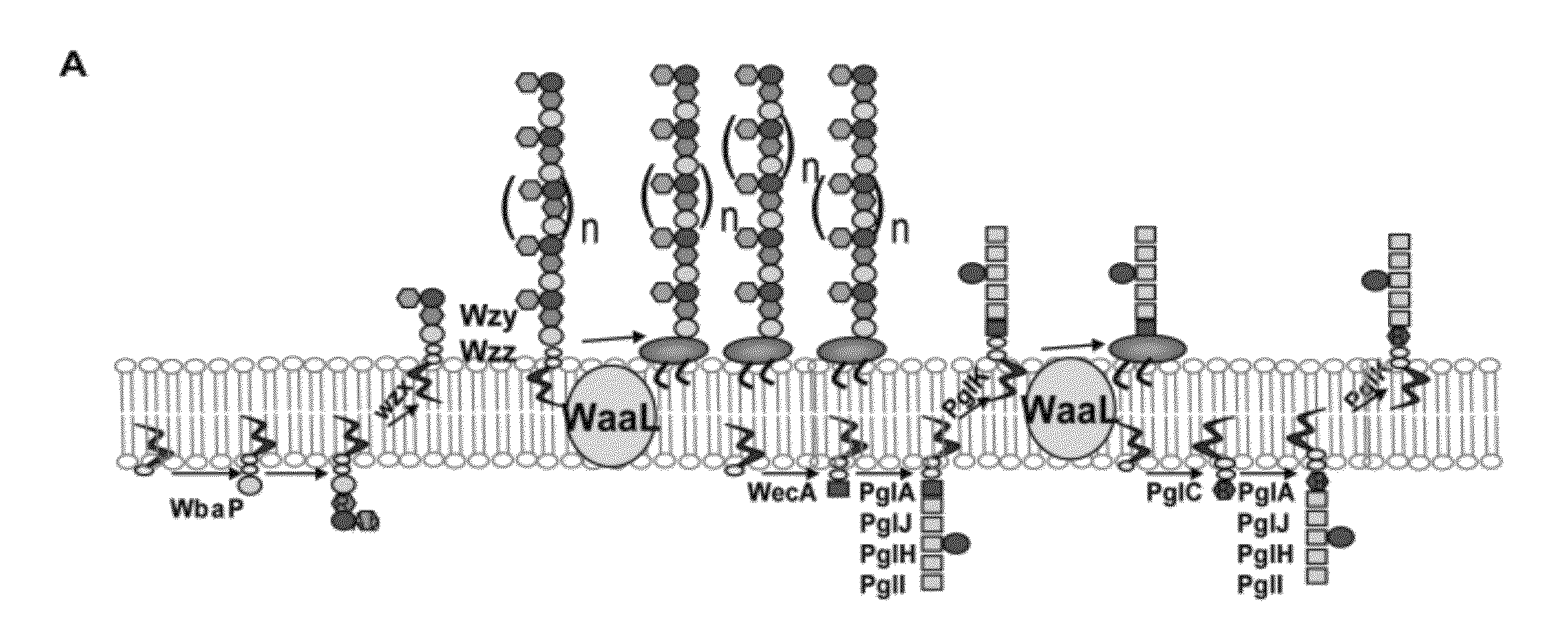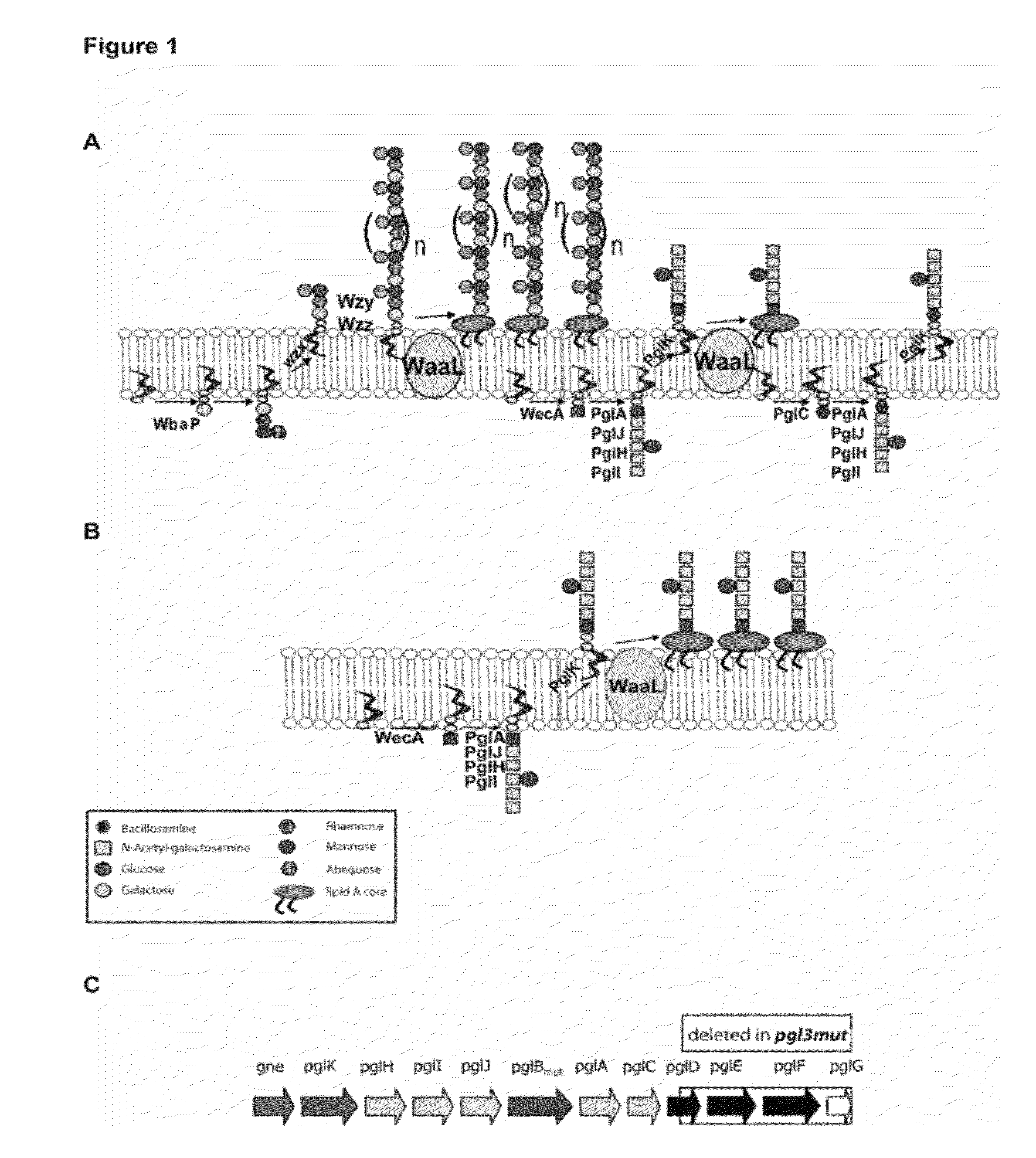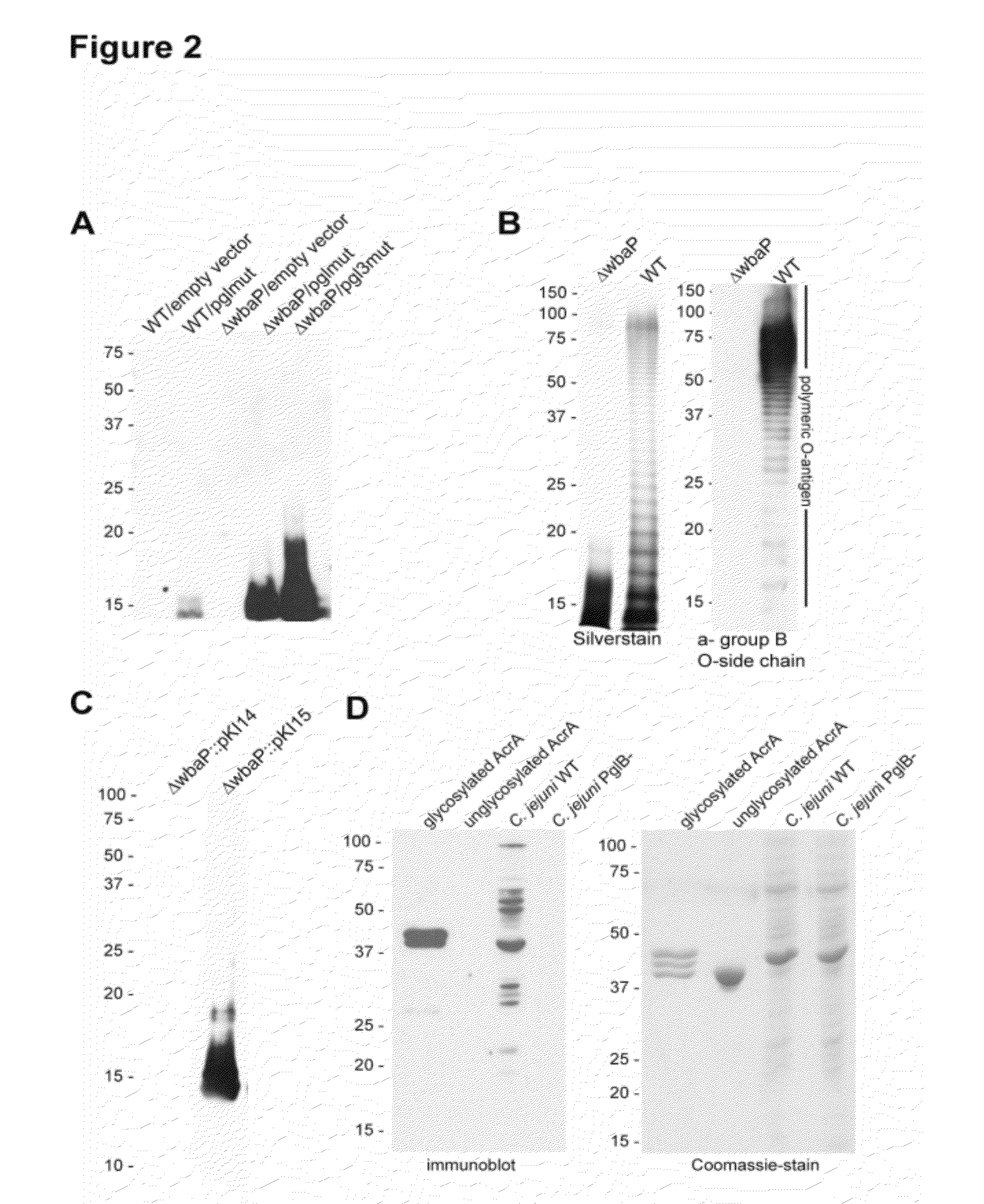Salmonella enterica presenting c. jejuni n-glycan or derivatives thereof
a technology of salmonella enterica and c. jejuni, applied in the field of salmonella enterica, can solve the problems of loss of immunogenicity in multiple proteins, no efficient vaccines,
- Summary
- Abstract
- Description
- Claims
- Application Information
AI Technical Summary
Problems solved by technology
Method used
Image
Examples
example 1
Display of C. jejuni N-glycan on the Salmonella enterica sv. Typhimurium lipid A core
[0070]Wzy-dependent O-antigen biosynthesis and C. jejuni N-glycan biosynthesis are homologous processes (Feldman et al., Proc. Natl. Acad. Sci. USA.; 102(8):3016-21, 2005) which both start with the assembly of an oligosaccharide structure on an undecaprenylpyrophosphate linker. The homology of the two pathways as well as the relaxed substrate specificity of the S. enterica sv. Typhimurium O-antigen ligase WaaL (Fält et al., Microbial Pathogenesis 20:11-30, 1996; De Qui Xu et al., Vaccine 25: 6167-6175, 2007) were explored for the possibility of combining the pathways to display the C. jejuni N-glycan on Salmonella lipid A core.
[0071]A plasmid containing the C. jejuni pglmut operon with inactivated PglB (pACYCpglmut; Wacker et al 2002) was introduced into a Salmonella enterica serovar Typhimurium strain by electroporation. As negative control the corresponding empty vector pACYC184 was used.
[0072]The...
example 2
Construction of a wbaP Deletion in Salmonella enterica Sv Typhimurium and Increased Display of C. jejuni N-glycan in the O-antigen Negative Strain
[0074]Deletion of O-antigen biosynthesis was assumed to abolish competition between the O-antigen biosynthesis pathway and biosynthesis of the C. jejuni N-glycan for the lipid carrier undecaprenylphosphate.
[0075]Construction of a wbaP deletion mutant of S. Typhimurium wild type SL1344 was carried out as described (Datsenko and Wanner, PNAS USA 97(12): 6640-5, 2000). Primers RfbP H1P1 (for sequence see table 1) and RfbP H2P2 annealing to template DNA from plasmid pKD3, which carries a chloramphenicol-resistance gene flanked by FRT (FLP recognition target) sites were synthesised. These primers also contain 40 to 45 additional nucleotides corresponding to regions directly upstream and downstream of the wbaP gene. They were used to amplify a gene cassette for in frame deletion of wbaP as described (Datsenko and Wanner, see above). After arabin...
example 3
Construction of an Altered C. jejuni pglmut Operon Leading to Increased C. jejuni N-glycan Display on Salmonella enterica sv. Typhimurium
[0079]In C. jejuni, the N-glycan is synthesised as the heptasaccharide GalNAc5(Glc)-Bac, where Bac, the sugar at the reducing end, is 2,4-diacetamido-2,4,6-trideoxy-glucopyranose. In E. coli and S. Typhimurium Bac is not synthesised unless the C. jejuni N-glycan biosynthesis machinery is heterologously expressed. It was shown that in E. coli wild type cells co-expressing the C. jejuni N-glycan biosynthesis machinery two different kinds of N-glycan are synthesised, one with Bac at the reducing end and one with GlcNAc. This phenomenon could be attributed to the action of WecA, an UDP-GlcNAc: undecaprenylphosphate GlcNAc-1-phosphate transferase involved in glycolipid biosynthesis (Linton D. et al., Mol. Microbiol., 55(6):1695-703, 2005). As it is known that Salmonella enterica sv Typhimurium O-antigen ligase WaaL can transfer GlcNAc containing structu...
PUM
 Login to View More
Login to View More Abstract
Description
Claims
Application Information
 Login to View More
Login to View More - R&D
- Intellectual Property
- Life Sciences
- Materials
- Tech Scout
- Unparalleled Data Quality
- Higher Quality Content
- 60% Fewer Hallucinations
Browse by: Latest US Patents, China's latest patents, Technical Efficacy Thesaurus, Application Domain, Technology Topic, Popular Technical Reports.
© 2025 PatSnap. All rights reserved.Legal|Privacy policy|Modern Slavery Act Transparency Statement|Sitemap|About US| Contact US: help@patsnap.com



